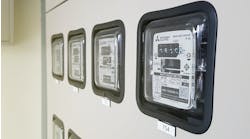Not all IoT analytics can live in the cloud
It's a classic scene in a contemporary-classic holiday movie: Chevy Chase's character in "National Lampoon's Christmas Vacation" struggling to illuminate the 250 strands of lights with which he has blanketed his house.
In some respects, that's not unlike the situation many industrial production organizations face today as they work to light up their facilities with actionable data. Sensors that send up real-time data about asset performance and asset health, allowing organizations to make smarter decisions about maintenance, production, labor allocation and more, is a beautiful thing. But one bad bulb or malfunctioning strand, so to speak, can derail the whole effort.
The struggle for more-seamless connectivity—and the associated technology needs—was a major theme in a session focused on distributed analytics at the Smart Industry 2015 conference. Presenter David Houghton, director of software platform company Bright Wolf, shared the story of a customer that specializes in management of transfusion blood. The expanding company had 50,000 devices in use in the field with the goal of reaching 80,000 by 2020, Houghton said, but the devices weren't connected in a way that would allow sharing of in-process performance data or real-time rich alerting. The customer recognized that it needed "the ability to light up all data points," Houghton said.
Holistic approach needed
Bright Wolf tackled the challenge by working to connect existing in-the-field devices, Houghton said, as well as by designing new devices with rich connectivity and fleet management capabilities in mind. It was an effort that demanded no small amount of time and effort. With projects like these, on the software development side, the process can take around five months, Houghton said. But actual implementation—setting up devices in the field—can easily take two years.
"It takes a long time on the hardware side," Houghton said. "You need a lot of expertise for this. You can't just have your developers download stuff and try to build a connected enterprise from there."
[callToAction]
Both smarter technology and a smarter, more holistic approach to connectivity are needed, Houghton and co-presenter Jason Lynch of Analog Devices said.
"We can barely handle the need today without making autonomous sensing a reality," Lynch said. "If you want to go from condition monitoring to diagnostic to prognostic, the sensor’s processing capability needs to be high."
Getting that technology in place will allow for analytics at the edge and informed real-time decision-making, he said. Lynch offered the example of autonomous driving: "You're not going to be able to send a question to the cloud and wait for an answer," he said. "We need decision-making right at the edge."
On the human side, an appreciation of the complexity and importance of each connection task is necessary, Houghton said. Anticipation of opportunities—of new ways of aggregating, parsing and looking at data—as well as the challenges of data management are vital.
"It's not hard to build a system that's one-tenth the size of Twitter if you're not careful," Houghton said. "Some people just don't appreciate the volume, the variety and the velocity of information that comes through."Despite the frustrating reality of a disconnect between what industry can already do from a software perspective and what many industrial companies are ready and able to implement on the hardware side, Houghton and Lynch said they're encouraged by progress being made. "I think we're in a very exciting phase if we can get over these technology challenges," Lynch said.


